Whether you live in an apartment complex, rent out a room or a floor of your home to tenants, or you just have noisy family, enjoying peace and quiet can be a virtual impossibility if someone else’s floor is your ceiling.
Footsteps, thumping bass, blasting televisions, loud conversations and any other type of ambient noise can disrupt your living space. Luckily there are several options when it comes to soundproofing your ceiling (and/or floor).
The objective of soundproofing a ceiling is simple: to prevent noise from traveling between two different points (the space above you and your abode) by suppressing, decoupling, reflecting, diffusing, and absorbing airborne and impact noise.
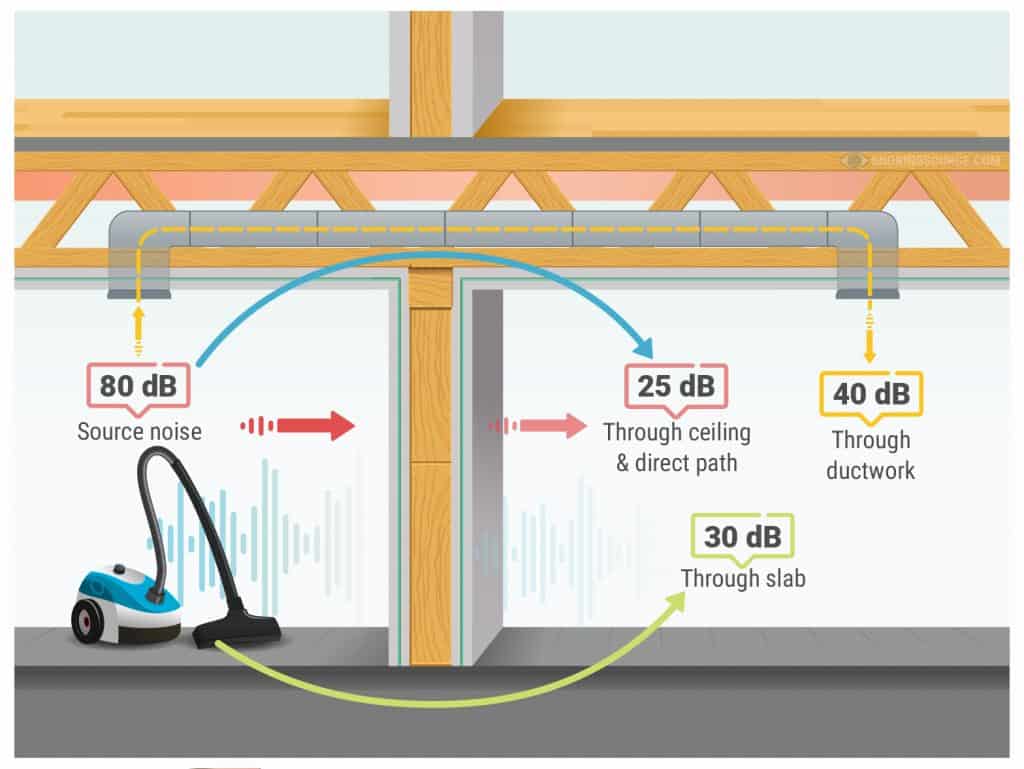
Airborne noise travels through the air via sound waves. Examples include music, conversations, TVs, bass, crying, and barking.
The sound waves from these types of noises are picked up and carried through the air until they collide with something solid, such as the floor in the space above you, which is also your ceiling.
The collision of sounds waves distributes vibrations through the floor/ceiling and into the area beyond it, i.e., your bedroom, living room, office, baby’s nursery, etc.
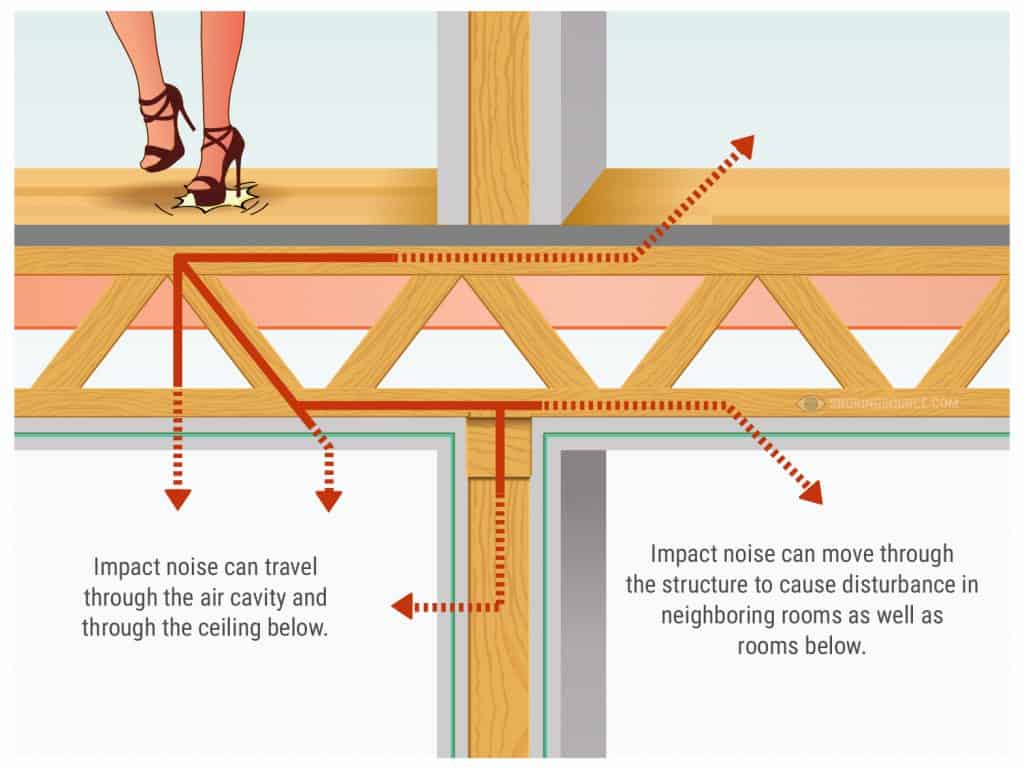
When someone walks or drops a plate, the resulting sound is referred to as impact noise. The vibrations of those sounds travel through structures rather than air (hence why this type of noise is also referred to as “structure-borne noise.”) In this case, impact noise travels through the structure of the floor above your ceiling.
In addition to understanding the different types of noise, in order to successfully soundproof a ceiling, you should also know what type of ceiling you have.
The ceiling type will dictate which soundproofing method will best eliminate airborne and impact noise.
There are two main types of ceilings: Drywall and Dropped/Suspended.
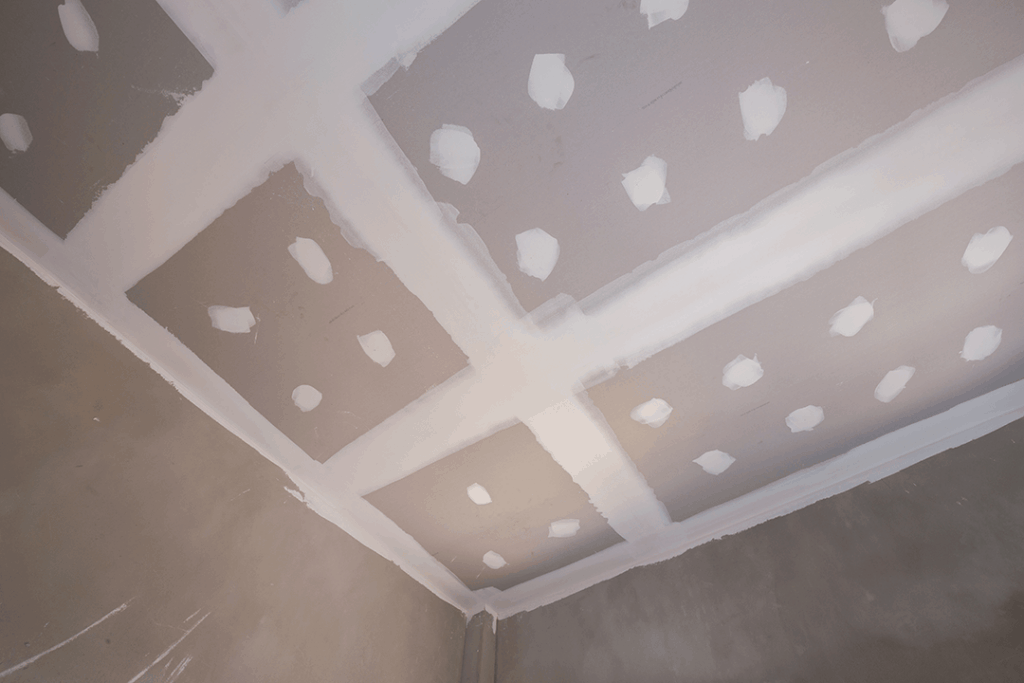
Drywall (also referred to as plasterboard and sheet rock) is comprised of gypsum that is wrapped in thick sheets of paper.
While drywall does have soundproofing qualities, in many cases, the drywall used to construct ceilings isn’t dense enough to successfully eliminate the transfer of noise.
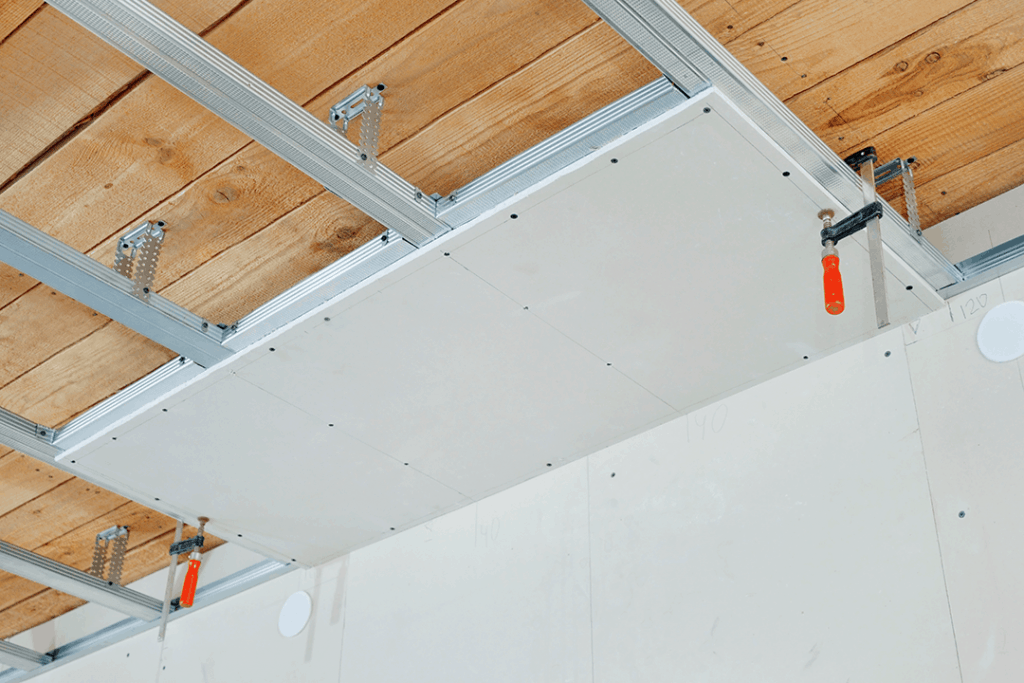
Dropped or suspended ceilings are considered secondary ceilings, as they are literally suspended or “dropped” from the structural ceiling above them.
The manner in which these ceilings are constructed allows for soundproofing, in that they decouple; that is, they create a space between the apartment/room/office, etc. above you and your bedroom/office/living room, etc.
However, despite this soundproofing quality, there are often other elements located between the dropped ceiling and the structural ceiling it’s attached to that create pathways for sound to travel through, such as light fixtures and ductwork.
Below, you’ll find a few different options that can be used to effectively soundproof a ceiling.
Make note of the type of ceiling you have, as it will directly affect the feasibility of these soundproofing methods.
Replace standard drywall with soundproof drywall.
This type of drywall is thicker than the standard drywall that is usually used in ceiling construction, and therefore it has a more effective "soundproofing quality."
However, it’s important to note that while soundproof drywall may be an effective way to prevent impact and airborne noise from traveling through your ceiling from the floor above you, it can get pricey.
Note: Soundproofing in general is costly, regardless of the materials being used.
Generally, a single soundproof drywall panel can cost upwards of $40, so if you’re attempting to soundproof a large space, the price can quickly become exorbitant.
If you don’t want to replace your existing drywall ceiling, consider installing an additional layer of drywall. Adding a layer of drywall will help to further absorb both airborne and impact noise, thereby minimizing the passage of sound waves from the space above you and through your ceiling assembly.
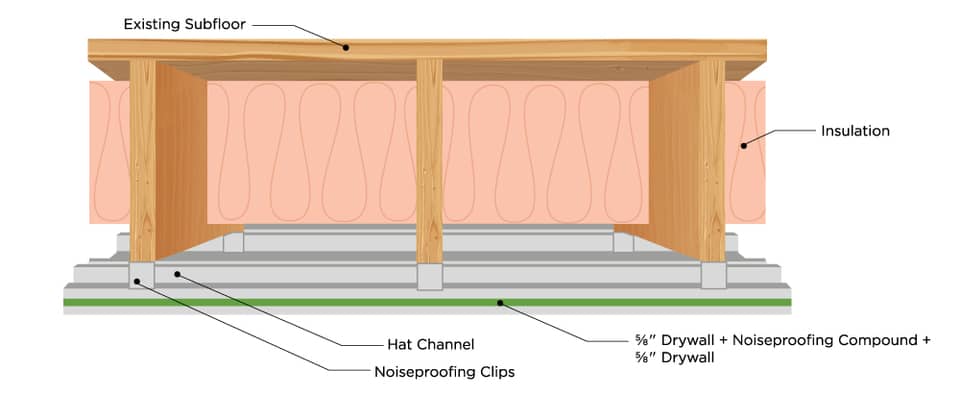
This material absorbs airborne noise, as well as impact noise; plus, you’ll have the added benefit of extra insulation, which can help to minimize the loss of heated and cooled air. Fiberglass insulation is relatively inexpensive and fairly easy to install too.
Learn More: The Types of Soundproof Insulation
Do note, however, that this method should only be reserved for fiberglass ceilings. It is not conducive for dropped ceilings because of the structural elements – ductwork, lighting fixtures, electrical wires, etc. – that are usually situated within these types of ceilings.
The installation of acoustic tiles can be an effective soundproofing remedy for both drywall and dropped ceilings. These tiles are constructed of fiberglass and higher-end tiles feature a layer of MLV or sound-interrupting foil.
The tiles are held in place with a metal grid, like the one you might have in place if you have a suspended ceiling. If you have a drywall ceiling, you can use specialized clips, which can be screwed into the drywall and the back of the panels, to anchor the acoustic tiles in place.
Alternatively – and for even easier installation on a drywall ceiling – acoustic panels can be secured in place applying construction adhesive to the back of each panel and affixing them to the ceiling. Once attached, use screws or nails to further secure the panels to the ceiling.
Acoustic foam works much the same way as acoustic tiles. Typically, they’re easier to install than the former and they’re more economical. However, it should be noted that they may not be as aesthetically pleasing, as this foam looks similar to an egg crate (note - egg cartons do not work well as a soundproofing material ). However, if arranged in a pattern – alternating between vertical and horizontal positioning – you can make them more pleasing.
Acoustic foam is usually sold in panels that vary in size; 1 square-foot, for example. You can apply construction adhesive to the back of the panels to secure them to the ceiling; or, you can affix them in place with finishing nails.
In addition to or instead of soundproofing the ceiling, you might want to consider soundproofing the floor above you. The objective here is to install sound-absorbing materials to prevent the passage of airborne and impact noise from the floor through your ceiling.
Of course, if the space above you is someone else’s – such as a neighbor in an apartment – you’ll have to discuss soundproofing their floors in order to soundproof your ceiling.
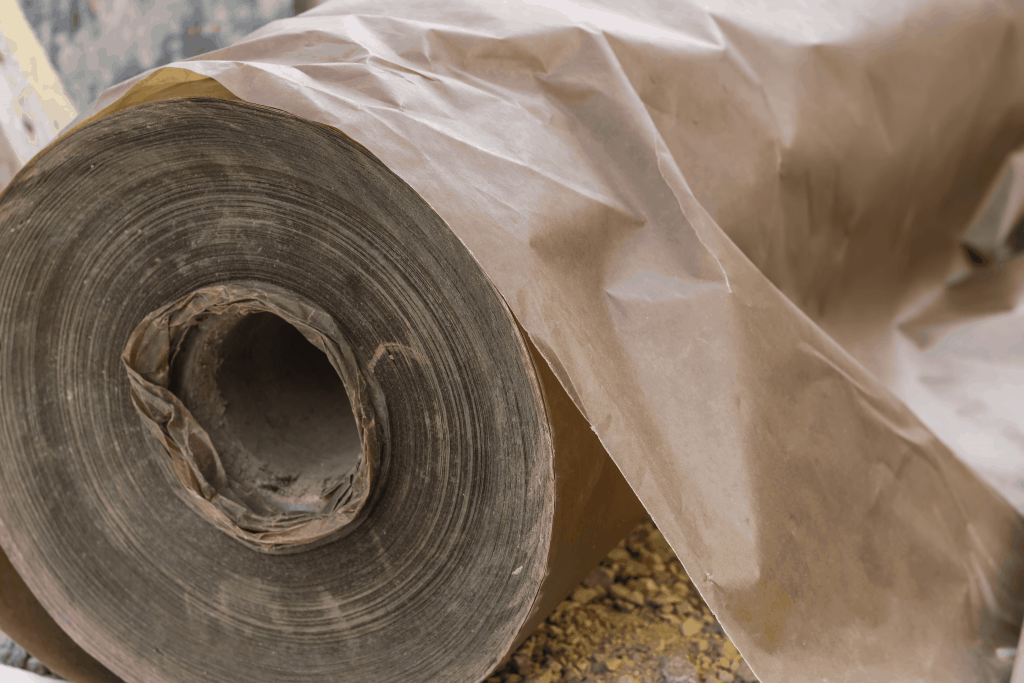
Using a soundproofing underlayment for flooring materials – carpeting, tiles, laminates, etc. – can effectively prevent airborne and impact noise from traveling from the space above you through the ceiling.
Acoustic floor underlayment is usually sold in adhesive rolls and it can be cut and placed over the subfloor, creating a sound-absorbing layer between the subfloor and the flooring material.
Cost and installation methods vary according to the specific type of underlayment you are using and the flooring material that will be placed above the underlayment.
Mass loaded vinyl is another type of underlayment that you can install underneath carpeting, laminate, tiles, and other types of flooring materials.
Mass loaded vinyl is comprised of a combination of vinyl and barium sulfate and it’s dense, making it an effective material for blocking sound.
Additionally, due to the density of the material, it provides extra padding underneath the flooring material and creates an additional layer of insulation to prevent the loss of conditioned air.
Note: There are few alternatives to MLV as the material is specifically engineered for soundproofing purposes.
Though it may not be as effective as an underlayment, dense rugs don’t require as much construction and is far less expensive and time consuming.
Tightly woven area rugs can be placed on the floors above your ceiling; the tighter the weave and the denser the rug, the more sound it will absorb. You can also place soundproof padding - like MLV - underneath the rugs to further enhance their noise absorption qualities and prevent the transfer of noise through the flooring.
Soundproof padding will also add an additional layer of softness to floors and create an insulation-like effect, thereby aiding in the loss of heated and cooled air.
Before choosing a soundproofing method for your ceiling, there are some key factors that you should take into consideration:
Namely, you’ll want to consider your budget, whether or not you want a permanent solution (if you’re renting, for example, a temporary, removable solution may be a better option), and if you want to undergo construction (DIY soundproofing can be a cumbersome task).
By taking these factors into consideration, you’ll be able to determine which method of soundproofing your ceiling will best work for your needs.

Snoringsource.com is a participant in the Amazon Services LLC Associates Program, an affiliate advertising program designed to provide a means for website owners to earn advertising fees by advertising and linking to amazon(.com, .co.uk, .ca etc) and any other website that may be affiliated with Amazon Service LLC Associates Program.